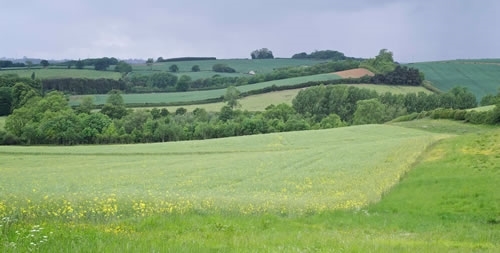A new study by the GWCT and RSPB has been published looking at the effects of management on farmland bird numbers at two demonstration farms – the GWCT’s Allerton Project in Leicestershire and the RSPB’s Hope Farm in Cambridgeshire.

Having published a wealth of peer-reviewed research in to the causes of farmland and songbird decline and possible management solutions, both organisations have achieved recovery in bird populations at their respective farms. This is in stark contrast to the sharp declines seen in the surrounding countryside.
At the GWCT’s Allerton Project, a wooded location with mixed farmland, predators occurred at a high density and so predator management in addition to habitat improvement helped to boost bird numbers.
Meanwhile the RSPB’s Hope Farm, situated on open and flat arable land, saw a lower density of predators and were therefore able to achieve an increase in farmland bird numbers through habitat management alone.
Further research now needs to be conducted to see how typical the findings from these two farms are when compared to the rest of the country.
Dr Nicholas Aebischer, of the Game & Wildlife Conservation Trust, is first author and has been studying the ecological needs of farmland birds for 25 years. He said: “The dramatic recovery in songbird numbers within a few years is evidence that we have successfully identified the ecological requirements of declining farmland birds and demonstrated that we know how to satisfy them at a local scale. We encourage farmers and land managers to visit our farm, learn about the practicalities of management, and hopefully leave filled with enthusiasm to replicate our success on their own land.”
Dr Will Peach, from the RSPB’s Centre for Conservation Science, is one of the study’s authors and has been studying farmland birds for over 20 years. He said: “The hemorrhaging of some of our favourite songbird species from our countryside has been one of the greatest conservation issues that we have faced over the last two decades. Although restricted to two sites, our study highlights that creating suitable nesting and feeding habitats is potentially key for the recovery of threatened farmland birds, and we know that many farmers are eager to help nature through properly-funded wildlife-friendly farming schemes.”
Sign up for the latest Big Farmland Bird Count news
The 2016 GWCT Big Farmland Bird Count takes place in February. Make sure you stay updated on all the latest #BFBC news online and are among the first to receive an invite to our Farmland Bird ID days in January:
Sign up for the latest Big Farmland Bird Count news >